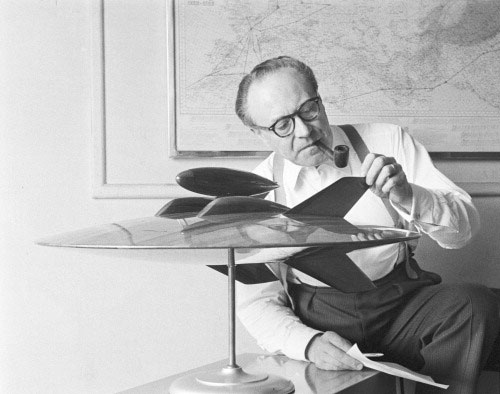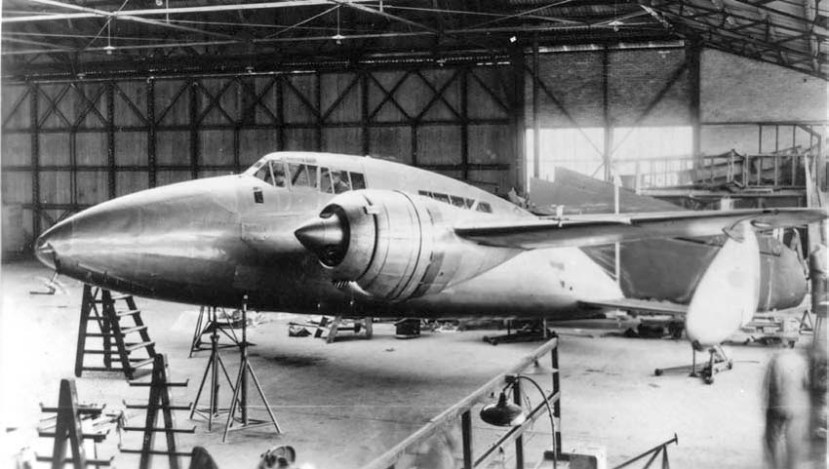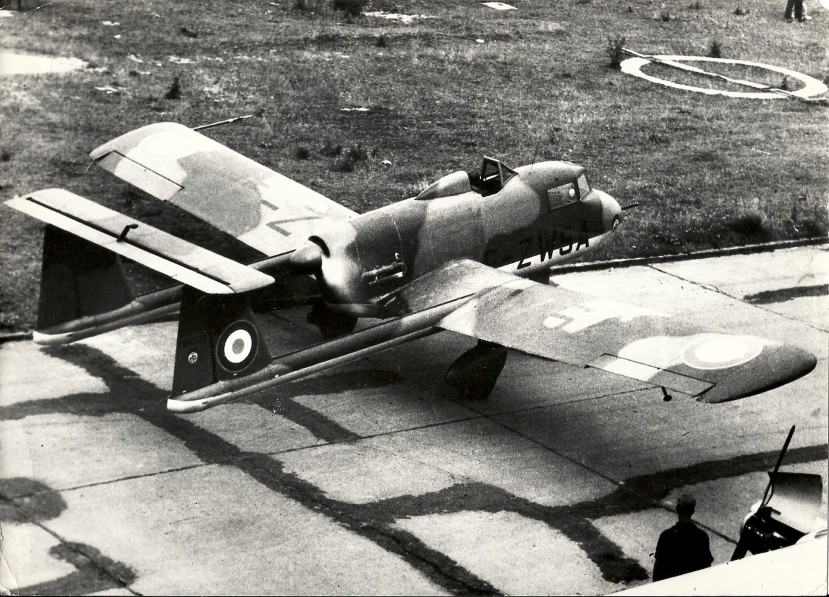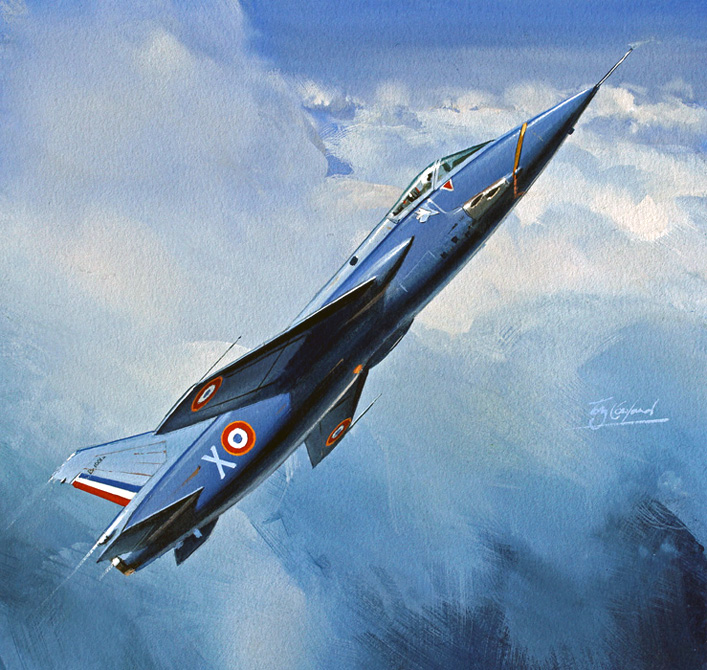Top 11 cancelled French aircraft
 Few nations have killed as many beautiful aircraft projects as France. Several on this list were felled by the German occupation- some by France’s traditional dislike of heavy fighters- and some were just unlucky. Though he does not make it onto the list itself- innovative designer Michel Wibault deserves a special mention- not only did he come up with the concept that the British Harrier was based on, he also worked on the exquisite Republic Rainbow. Here are eleven of the most fascinating aircraft, designed in France, that were never to enter service.
Few nations have killed as many beautiful aircraft projects as France. Several on this list were felled by the German occupation- some by France’s traditional dislike of heavy fighters- and some were just unlucky. Though he does not make it onto the list itself- innovative designer Michel Wibault deserves a special mention- not only did he come up with the concept that the British Harrier was based on, he also worked on the exquisite Republic Rainbow. Here are eleven of the most fascinating aircraft, designed in France, that were never to enter service.
To keep this blog going- allowing us to create new articles- we need donations. We’re trying to do something different with Hush-Kit: give aviation fans something that is both entertaining, surprising and well-informed. Please do help us and click on the donate button above – you can really make a difference (suggested donation £10). You will keep us impartial and without advertisers – and allow us to carry on being naughty. Once you’ve done that we hope you enjoy 10 Incredible Soviet fighter Aircraft that never entered service. A big thank you to all of our readers.
(Cancelled aircraft from all around the world can be found here)
11. SNCASO SO8000 Narval
In a parallel universe, fighters look like the Narval, or I at least hope they do. The Narval offered a fascinating insight into how piston-engine fighters may have evolved if they had not been so rudely pushed out of the way by the coming of the jet engine. Two prototypes were produced for the proposed SNCASO SO.8000 Narval (Narwhal) naval fighter. The engine was the Arsenal 12H (essentially a Jumo 213, which also powered the incredible Nord Noroit). Two prototypes were constructed, the first being flown for the first time on 1 April 1949 – the type was clearly obsolete as it offered a piffling top speed of 454 mph (in the same year the 600mph+ Sabre had entered service in the United States). SNCASO gave up this beautiful turkey in the early ’50s. Only two prototypes were constructed, and the type did not enter production

10. SNCASO SE.100

The SNCASO SE.100 was an outstanding aircraft blessed with a sensational 360 mph top speed and exceptionally powerful armament. It apparently handled well, which is surprising given its truncated fuselage and some decidedly odd features, not least the ‘Mercier’ ailerons, wherein the entire wingtip swivelled to give lateral control, and a tricycle undercarriage featuring rear wheels that retracted into the tail fins. Incredibly the production version was to be armed with ten 20-mm cannon, eight firing forward and two in a turret for rear defence, an armament unmatched by any fighter of the war. By the time France fell the prototype had been tested (and admittedly crashed) and the Citroën car factory was tooling up for mass production but not a single production aircraft was destined to be built and operational service of the ‘French Beaufighter’ was sadly never to occur.
9. C.A.P.R.A R40

Little is known about the proposed C.A.P.R.A R40 twin-engined fighter. From what information is available, it seems that it would have been an extremely effective machine. A top speed of 398 mph would have been combined with the awe-inspiring armament of six forward-firing MAC rifle-calibre machine-guns and two 20-mm cannon and five rearward firing 7.5-mm machine-guns. The even more capable R41 would have had a top speed of 413 mph. The aircraft would have been powered by two Hispano-Suiza 12Ys.



8. Dassault Mirage 4000

France’s Mirage 2000 has been described by many fighter pilots as the perfect flying machine. Its ferociously high performance and almost telekinetic responsiveness have left pilots of all nationalities giddy with love and respect for the ‘Electric Cake Slice’. So imagine a ‘2000 with twice the power and you have a pretty spectacular aeroplane; the 4000, which first flew in 1979 was a just such an aircraft, in the same heavyweight class as the F-15 and Su-27. The Mirage 4000 was one of the first aircraft to incorporate carbon fibre composites (to keep weight down)- and was probably the first to feature a fin made of this advanced material. Thanks to its light structure and powerful engines it had a thrust-to-weight ratio that exceeded 1: 1 in an air-to-air load out. On its sixth test flight it reached 50,000 feet at Mach 2 in 3 minutes 50 seconds. The 4000 would have been agile, long-ranged and able to haul an impressive arsenal. Its capacious nose could have held an advanced long-range radar. The French air force didn’t want it, Iran — another potential customer- had a revolution, and Saudi Arabia, also on the look-out for a heavy fighter, opted instead for the F-15. Despite its obvious potential, the Mirage 4000 failed to find a customer, which was an enormous kick in the nuts for Dassault, as the company had privately funded the type’s development.
Read an interview with a Mirage 2000 pilot here.
7. Bugatti 100P

The global depression of the 1930s put car giant Ettore Bugatti’s industrial empire into a state of decline. In an attempt to expand, Ettore moved into the world of aero-engine production. To publicise this move in the most dramatic fashion, he decided to create an incredibly fast racing aircraft, the 100P. It was planned that the Bugatti Model 100 would win the 1939 Deutsch de la Meurthe Cup Race. As one might expect from Bugatti, the design was exceptionally beautiful. The most unusual feature of the aircraft was its engine configuration. The drive train of the two rear mounted engines ran to the front of the aeroplane where there was a gearbox. One engine would drives a driveshaft on the left side, and the other one on the right side of the aeroplane. The gearbox took power from those two engines and delivered it to two contra-rotating propellers. This hugely innovative design was expected to reach a speed above 460 mph. The aircraft was not completed by the September 1939 deadline and was hidden to avoid the advanced technology falling into German hands.
It has long been rumoured that a fighter variant of the type was to follow on from the basic racer. Scotty Wilson, the creator of a flying replica of the 100P, was keen to nip this rumour in the bud, noting that he has seen no concrete evidence of this. “That is a persistent myth that we have seen no evidence for. The fact is: the aircraft is very small and there really is no room for armament.” though he continued “Let me speculate on something, we know the French government was interested in a small lightweight fighter. In fact Caudron built such a type, which saw some service with the Finnish air force (The Cauldron-Renault C.710 series). The Bugatti aircraft was really not suited to this” however Wilson concedes that it could have been used in the unarmed reconnaissance role. It does however seem likely that a larger version of the aircraft of this aircraft could have been adapted to the fighter role. The other fact that Wilson was keen to clarify was the nature of the 110P, which was simply the 100P, with a slightly smaller wing to allow a higher top speed of 475 mph.
Sadly, Wilson was killed in 2016 flying the 100P replica.
6. SNCAC NC.1071

One way to soup up your twin radial-engined torpedo bomber is to replace the powerplants with Nene jet engines. This is what happened to the rather pedestrian NC.1070, and the improvement in performance of the resultant NC.1071 was startling: the top speed went from a snore-inducing 359mph to a tooth-loosening 500mph (an increase of 40%) and its service ceiling jumped from 32,644 ft to 43,000 ft. Unfortunately the aforementioned tooth-loosening was rather too real- the type suffered from severe structure distortion in flight. After consideration of a fighter (NC.1072) and fighter version (NC.1073), the project was binned.


5. SNCASE S.E.5000 Baroudeur

Aeroplane designers hate wheels. Wheels are for cars. The weight and complexity of a retractable undercarriage is a huge nuisance. Why not do away with them altogether? The wartime Germans were very keen on this idea and built a series of aeroplanes that took off from trolleys. The aircraft would simply uncouple itself from the trolley as it took-off, the trolley remaining behind on the runway. The aeroplane would land on simple skids. A trolley take-off frees an aeroplane from the need for vast, vulnerable runways. In a war, airbases would be priority targets and how ever good a fighter was, it be would utterly impotent if it had no runway to take off from. Mindful of this problem, and fearing the technological hurdles of vertical take-off and landing, Sud-Est, turned back to the ‘trolley dolly’ concept to create the Sud-Est SE.5000 Baroudeur (‘adventurer’). The aircraft took its first flight on 1 August 1953. It was superb: trolley take-offs proved effortless, skid landings a delight (even in crosswinds). It could be rapidly rearmed and refuelled, and would have made a superb tactical fighter. If required, the trolley could even have be rocket-assisted! The ‘jet dirtbike’ never made it into service, usurped by a generation of concrete-loving fast-jets.
4. Potez 75

Intended as a battlefield support and counter-insurgency aircraft armed with guided anti-tank missiles (the SS-10), the wonderfully anarchistic Potez 75 shared much with modern helicopter gunships, including its top speed of 171 mph. The type didn’t prove successful as a missile platform and was subsequently modified to perform the light attack role with guns, rockets and light bombs. It proved its worth in this role in a combat evaluation in the dirty Algerian War of the mid-1950s. Potez received orders for 100 from the French military. Light COIN aircraft are seldom popular with air forces, as it is feared they lead to subservience to land forces and threaten the beloved high-tech fast jets. Accordingly, the Potez 75 failed to survive budget cuts.
3. Arsenal VB 10

Like the Bugatti 100P, the VB 10 used a system of two engines (in this case 1150HP Hispano-Suiza 12Zs) each driving one propeller in a set of two contra-rotating propellers. This monstrous heavy interceptor was designed and ordered into production in 1940, but an inconvenient invasion and occupation effectively put the project on pause. If the type had entered service anytime before 1943- it would have been word-class: its 435 mph top speed and four 20-mm cannon would have been a formidable challenge to any opponent. As it was, the type did not fly until 1947- by which time it was a dinosaur.

2. SNCASO SO.9000 Trident

In 1948 the French Air Staff gave SNCASO the task of designing a point defence intercepter capable of climb rates, altitudes and a top speed far in excess of existing designs. The simplest way to achieve the desired performance was by combining a rocket engine with two turbojets. The rocket engine was mounted in the aft section of the fuselage, the turbojets in pods on the tips of the wings. The aircraft first first flew on 2 March 1953 – though the rocket was not added until September 1954. During the 18-month test programme the aircraft completed over 100 flights, reached Mach 1.8 and an altitude of 20,000 metres (65,000 ft). A Trident II was lost due to an accident on 21 May 1957. This promising interceptor was cancelled in 1957, partly due to the then fashionable belief that manned aircraft had no future- and also due to advances in jet technology. In 1958, the Trident II set a spate of time-to-height and altitude records. An absolute record altitude of 24,217 m (79,452 ft) in May 2 was made by Roger Carpentier, which has never been bettered by another self-launched rocket aeroplane (one not sent aloft by mothership). This altitude record was smashed a mere five days later by the jet-propelled F-104 Starfighter.
1. Breguet Taon

The achingly beautiful Taon was submitted for the NATO Light Weight Strike Fighter competition in 1953. The Taon (among other entrants) was defeated by the Fiat G91, but France rarely took the results of NATO procurement contests seriously if it didn’t win them. In the end it didn’t order the G91- but neither did it opt for the Taon, and this promising type was cancelled. Before its demise the aircraft set an international speed record for a 1,000 km closed circuit with a speed of 1,046.65 km/h (650.36 mph) on 25 April 1958. Four months later it bettered this by 38mph. The Taon was far from a wasted effort as it led to the larger twin-engined Breguet Br.121 concept, the basis of the SEPECAT Jaguar. The Jaguar was produced from 1972 to 2008, and remains in service with the Indian Air Force.


Thank you for reading Hush-Kit. Our site is absolutely free and we have no advertisements (any adverts you see are from WordPress and not Hush-Kit). If you’ve enjoyed an article you can donate here. At the moment our contributors do not receive any payment but we’re hoping to reward them for their fascinating stories in the future.
Want to see more stories like this: Follow my vapour trail on Twitter: @Hush_kit
Thank you for reading Hush-Kit. Our site is absolutely free and we have no advertisements. If you’ve enjoyed an article you can donate here. At the moment our contributors do not receive any payment but we’re hoping to reward them for their fascinating stories in the future.
Have a look at 10 worst British military aircraft, Su-35 versus Typhoon, 10 Best fighters of World War II , top WVR and BVR fighters of today, an interview with a Super Hornet pilot and a Pacifist’s Guide to Warplanes. Was the Spitfire overrated? Want something more bizarre? The Top Ten fictional aircraft is a fascinating read, as is The Strange Story and The Planet Satellite. The Fashion Versus Aircraft Camo is also a real cracker. Those interested in the Cold Way should read A pilot’s guide to flying and fighting in the Lightning. Those feeling less belligerent may enjoy A pilot’s farewell to the Airbus A340. Looking for something more humorous? Have a look at this F-35 satire and ‘Werner Herzog’s Guide to pusher bi-planes or the Ten most boring aircraft. In the mood for something more offensive? Try the NSFW 10 best looking American airplanes, or the same but for Canadians.
 I was delighted to hear that this article inspired Sam Combs to create the following illustrations:
I was delighted to hear that this article inspired Sam Combs to create the following illustrations:



“If you have any interest in aviation, you’ll be surprised, entertained and fascinated by Hush-Kit – the world’s best aviation blog”. Rowland White, author of the best-selling ‘Vulcan 607’
I’ve selected the richest juiciest cuts of Hush-Kit, added a huge slab of new unpublished material, and with Unbound, I want to create a beautiful coffee-table book. Pre-order your copy now right here
TO AVOID DISAPPOINTMENT PRE-ORDER YOUR COPY NOW

From the cocaine, blood and flying scarves of World War One dogfighting to the dark arts of modern air combat, here is an enthralling ode to these brutally exciting killing machines.
The Hush-Kit Book of Warplanes is a beautifully designed, highly visual, collection of the best articles from the fascinating world of military aviation –hand-picked from the highly acclaimed Hush-kit online magazine (and mixed with a heavy punch of new exclusive material). It is packed with a feast of material, ranging from interviews with fighter pilots (including the English Electric Lightning, stealthy F-35B and Mach 3 MiG-25 ‘Foxbat’), to wicked satire, expert historical analysis, top 10s and all manner of things aeronautical, from the site described as:
“the thinking-man’s Top Gear… but for planes”.
The solid well-researched information about aeroplanes is brilliantly combined with an irreverent attitude and real insight into the dangerous romantic world of combat aircraft.
FEATURING
-
-
-
- Interviews with pilots of the F-14 Tomcat, Mirage, Typhoon, MiG-25, MiG-27, English Electric Lighting, Harrier, F-15, B-52 and many more.
- Engaging Top (and bottom) 10s including: Greatest fighter aircraft of World War II, Worst British aircraft, Worst Soviet aircraft and many more insanely specific ones.
- Expert analysis of weapons, tactics and technology.
- A look into art and culture’s love affair with the aeroplane.
- Bizarre moments in aviation history.
- Fascinating insights into exceptionally obscure warplanes.
-
-

The book will be a stunning object: an essential addition to the library of anyone with even a passing interest in the high-flying world of warplanes, and featuring first-rate photography and a wealth of new world-class illustrations.

Rewards levels include these packs of specially produced trump cards.



Pre-order your copy now right here
I can only do it with your support.



Very interesting and informative.
That SNCASO Narval is like something out of that anime film The Sky Crawlers. Fantastic
http://skycrawlersinnocentaces.wikia.com/wiki/Category:Aircraft
Does anyone else think the Jaguar is a work art? I know it’s been used as one at the Tate Gallery, but I think it’s just so elegant even as a working aircraft.
Absolutely agree- gorgeous
The French aviation industry in the post war years were so creative some amazing designs produced I’d like to see more of them
I’m seriously impressed by the Narval but, erm, did anyone think about bailout procedures at all? Could’ve been colourful. Mind you, with a bang seat and a RR Nene (or even a Derwent) it could still have been quite the fighter.
I’ve often thought that about the SAAB J21 as well, but at least it did have an ejector seat,not sure what the height & speed restrictions on it’s use were but the thought of being sliced & diced by the propeller would have been in any pilot’s thoughts.
To all thoses who are amazed by the immediate post-war french airplanes:
At the end of WWII, we (the french) were lacking most of crucual datas about how to design modern airplanes. Beeing occuped by the germans during the war made some researchs in fields like jet engines or aerodynamics impossible.
However, germans used to rely on french subcontractors for some of their own research, including wing tunnel testing for some of their research models. When the war ended, the data collected that way was used in many french projects, as the engineeers were trying to figure out how to make something fly with a swept wing and no propeller… ^^
That’s why lots of immediate post-war french prototypes looks like very futuristic for the period they were built: they were in fact inspired by all the late-war german projects. If you want to learn more, check about the Arsenal VG90 (air intakes and cockpit inspired by the Messerschmitt P.1110), the Coleoptere (ring winged-VTOL, inspired by the Heinkel Wespe) or the SO.6020 espadon.
In a sad turn of events, Scotty Wilson was killed and the Bugatti 100P replica destroyed shortly after takeoff on test flight #3. A television report link follows.
Again, a sad postscript to an intriguing article.
http://kfor.com/2016/08/06/historic-replica-airplane-the-bugatti-100p-crashes-near-burns-flat-pilot-and-designer-scotty-wilson-dies/
At last a website for REAL aircraft. None of this Fantasy shite. Well done.
Site sympathique ! Amicalement.
Did anyone noticed that the Potez 75 (nbr 4) looks a lot like what could have been the….A10 grand-father ? Similar design, wing configuration, structural approach and intended use in battle….”counter-insurgency” …..it is striking to me with this picture, similar specs brings similar designs….
Brilliant. Simply brilliant.
Mirage 4000 was the idea of Rafale? Seems similar roots…